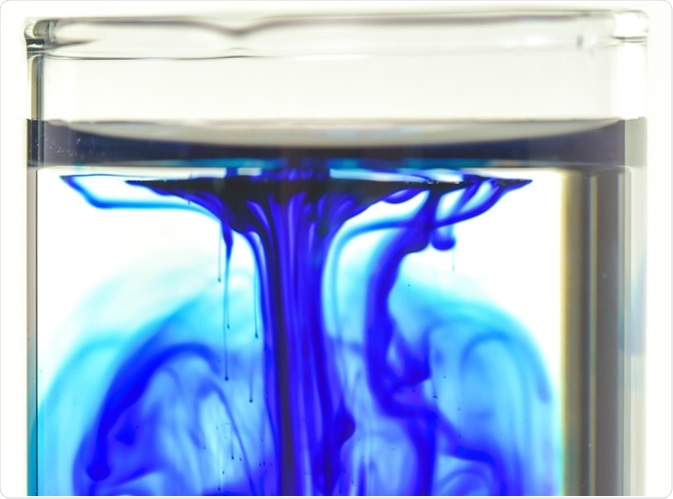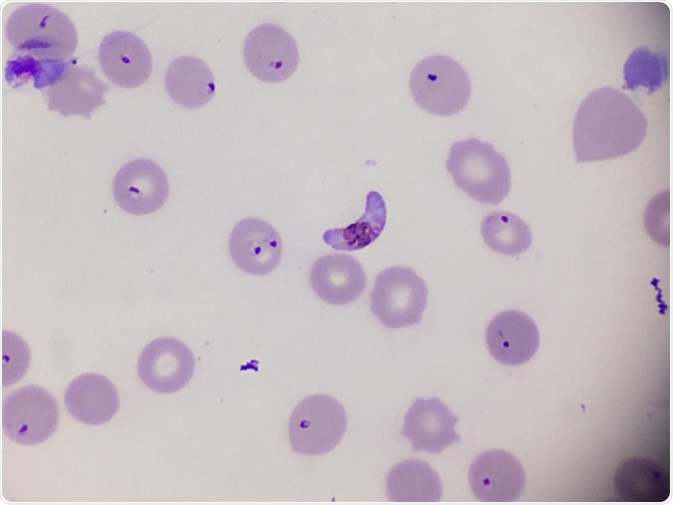Post-vaccine syndrome is a complex disease. Treatment must be individualized according to each patient’s presenting symptoms and disease syndromes. Not all patients respond equally to the same interve..
03/15/25 • 944 ভিউ
Treatment approach
It is important to emphasize that, since there are no published reports detailing how to treat vaccine-injured patients, our treatment approach is based on the postulated pathogenetic mechanisms, principles of pharmacology, clinical observations, and feedback from vaccine-injured patients themselves. We are constantly updating the approach as new data emerges and based on consultation with trusted healthcare providers.
Patients with post-vaccine syndrome must not receive further COVID-19 vaccines of any type. Likewise, patients with long COVID should avoid all COVID vaccinations.
Patients with post-vaccine syndrome should do whatever they can to prevent themselves from getting COVID-19. This may include a preventative protocol (see I-PREVENT) or early treatment in the event you do contract the virus or suspect infection (see I-CARE). COVID-19 will likely exacerbate the symptoms of vaccine injury.
Once a patient has shown improvement, the various interventions should be reduced or stopped one at a time. A less intensive maintenance approach is then suggested.
The core problem in post-vaccine syndrome is long-lasting “immune dysregulation.” The most important treatment goal is to help the body restore a healthy immune system — in other words, to let the body heal itself. Our recommended treatment strategy involves two major approaches:
- Promote autophagy to help rid the cells of the spike protein
- Use interventions that limit the toxicity/pathogenicity of the spike protein
We recommend the use of immune-modulating agents and interventions to dampen and normalize the immune system rather than the use of immunosuppressant drugs, which may make the condition worse.
Although we have listed suggested therapies below, we strongly suggest that, before initiating any of the below therapeutics, all patients and providers closely review the more detailed and comprehensive document — “An Approach to Managing Post-Vaccine Syndrome” — for information regarding dosing, cautions, contraindications, and other important details.
First Line Therapies
(Not symptom specific; listed in order of importance)
- Intermittent daily fasting or periodic daily fasts
- Ivermectin
- Moderating physical activity
- Low-dose naltrexone
- Nattokinase
- Aspirin
- Melatonin
- Magnesium
- Methylene blue
- Sunlight and Photobiomodulation
- Resveratrol
Probiotics/Prebiotics/Adjunctive/Second-Line Therapies
(Listed in order of importance)
- Vitamin D (with Vitamin K2)
- N-acetyl cysteine
- Cardio Miracle™ and L-arginine/L-citrulline supplements
- Omega-3 fatty acids
- Sildenafil (with or without L-arginine- L-citrulline)
- Nigella sativa
- Vitamin C
- Spermidine
- Non-invasive brain stimulation
- Intravenous Vitamin C
- Behavioral modification, relaxation therapy, mindfulness therapy, and psychological support
Third Line Therapies
- Hyperbaric oxygen therapy
- Low Magnitude Mechanical Stimulation
- “Mitochondrial energy optimizer”
- Hydroxychloroquine
- Low-dose corticosteroid
A note about anesthesia and surgery:
Patients should notify their anesthesia team if using the following medications and/or nutraceuticals, as they can increase the risk of Serotonin syndrome (SS) with opioid administration: Methylene blue Curcumin Nigella Sativa Selective Serotonin Reuptake Inhibitors (SSRIs)
About Ivermectin
Ivermectin is a well-known, FDA-approved drug that has been used successfully around the world for more than four decades. One of the safest drugs known, it is on the WHO’s list of essential medicines, has been given over 3.7 billion times, and won the Nobel Prize for its global and historic impacts in eradicating endemic parasitic infections in many parts of the world.
Review the totality of supporting evidence for ivermectin in COVID-19.
It is likely that ivermectin and intermittent fasting act synergistically to rid the body of the spike protein.
It appears that vaccine-injured patients can be grouped into two categories: i) ivermectin responders and ii) ivermectin non-responders. This distinction is important, as the latter are more difficult to treat and require more aggressive therapy.
For ivermectin responders, prolonged and chronic daily treatment is often necessary to support their recovery. In many, if the daily ivermectin is discontinued worsening symptoms often recur within days.
Ivermectin is best taken with or just following a meal, for greater absorption.
Potential Health Benefits of Methylene Blue
What is methylene blue?
Originally synthesized in 1876, methylene blue is a diaminophenothiazine that has a low redox potential of 11 mV, thereby allowing this compound to readily cycle between its oxidized and reduced form1. Methylene blue, which has the chemical name of 3,7-bis(dimethylamino) phenothiazine chloride tetra methylthionine chloride, is highly soluble in both water and organic solvents, thereby allowing this chemical to freely enter cells and various organelles, including the mitochondria, lysosomes, and nucleus. Within the mitochondria, methylene blue facilitates the movement of electrons while reducing the production of superoxide molecules.
Methylene blue was the first fully synthetic drug to be used in medicine for the treatment of malaria parasites2. Historically, methylene blue was also incorporated into the medication of psychiatric patients so that clinicians could monitor their adherence due to blue urine among compliant patients.
 Methylene blue fall in water in glass tube. Image Credit: FreeProd33 / Shutterstock
Methylene blue fall in water in glass tube. Image Credit: FreeProd33 / ShutterstockIndustrial uses of methylene blue
Outside of medicine, methylene blue has primarily been used as a synthetic dye for paper, as well as wool, silk, and cotton textiles. When used to color textiles, methylene blue adheres to the interstitial spaces of cotton fibers to integrate into fabrics.
Methylene blue is also widely used as a dye for pharmaceutical, printing, paint, and food applications. For example, methylene blue dye is used as an oxidation-reduction indicator for analytical chemistry tools and as a photosensitizer for the trace analysis of anionic surfactants.
Medical indications for methylene blue
The activity of methylene blue is wide-ranging, as it can inhibit soluble guanyl cyclase, scavenge the free radical nitric oxide (NO), and modulate the NO-cyclic guanosine monophosphate (cGMP) signaling pathway.
Throughout the world, methylene blue is currently approved for the treatment of numerous conditions, of which include acquired and hereditary methemoglobinemia, preventing ifosfamide-induced encephalopathy in cancer patients, preventing urinary tract infections, visualizing nerves and endocrine glands during surgical procedures, and sterilizing blood prior to transfusions3.
 Eosin Methylene Blue (EMB) Agar. Image Credit: OneMashi / Shutterstock
Eosin Methylene Blue (EMB) Agar. Image Credit: OneMashi / ShutterstockMethemoglobinemia
Methemoglobinemia occurs when the iron in hemoglobin is oxidized from the ferrous to the ferric state, which reduces the blood’s ability to efficiently carry oxygen and carbon dioxide. Methylene blue acts as a co-factor for nicotinamide adenine dinucleotide phosphate (NADPH)-dependent methemoglobin reductase, which leads to the formation of reduced methylthioninium chloride that can reduce ferric iron to ferrous iron needed to restore the oxygen-carrying capacity of hemoglobin.
 Plasmodium falciparum gametocyte in blood smear. Image Credit: Pingpoy / Shutterstock
Plasmodium falciparum gametocyte in blood smear. Image Credit: Pingpoy / ShutterstockVasoplegic syndrome
Vasoplegic syndrome refers to vasodilative shock that can present as severe hypotension, tachycardia, altered cardiac output, and/or reduced pulmonary pressure. Otherwise known as low systemic vascular resistance syndrome, vasoplegic syndrome often occurs secondary to an inflammatory response following cardiopulmonary bypass surgery.
Methylene blue, which inhibits the effects of NO, has been shown to induce hemodynamic effects in vasoplegic syndrome at a dose of 2 mg/kg administered over 30 minutes, followed by a second dose within 24 hours6.
Neuroprotective properties
A unique feature of methylene blue is its ability to penetrate the blood-brain barrier and accumulate in the brain, which has led researchers to investigate the potential utility of this agent for the treatment of neurological disorders. In addition to its bioavailability in the brain, methylene blue also reduces oxidative stress in the brain. This chemical process is implicated in Alzheimer’s disease, Parkinson’s disease, and Huntington’s disease. More specifically, methylene blue acts as an electron carrier in the electron transport chain, wherein it inhibits complexes I and III to promote respiration.
The neuroprotective effects of methylene blue may also be attributed to its role in increasing the expression of nuclear factor erythroid 2-related factor 2 (Nrf2). Nrf2 is a transcription factor that regulates several enzymes involved in cellular stress responses, some of which include superoxide dismutase catalase, glutathione peroxidase, and glutathione reductase5. Other mechanisms by which methylene blue may induce neuroprotective effects include facilitating the degradation and clearance of tau proteins, which is a characteristic feature of Alzheimer’s disease, promoting autophagy, and reducing amyloid plaque accumulation.
To date, several randomized clinical trials (RCTs) have investigated the potential benefits of methylene blue administration in the treatment of Alzheimer’s disease. For example, one recent study reported that patients administered leuco-methylthioninium bis-hydromethanesulfonate (LMTM), a modified version of methylene blue, exhibited enhanced cognitive performance and reduced beta-amyloid plaque buildup7. Despite these observations, additional research is needed to chemically modify methylene blue to improve its uptake into the brain and include larger and more diverse patient populations.
The toxicity of methylene blue
Despite its medicinal properties when used under the guidance of a treating clinician, methylene blue is highly toxic, particularly when released into the environment by textile industries. For example, methylene discharge into the environment, such as natural water resources, can reduce light penetration and contaminate food chains for various organisms4.
Exposure to high levels of methylene blue increases the risk of numerous health risks among humans, some of which include respiratory distress, abdominal disorders, blindness, gastrointestinal disease, and psychological dysfunction. Other toxic effects associated with methylene blue may include nausea, diarrhea, vomiting, cyanosis, shock, gastritis, jaundice, tissue necrosis, and tachycardia4.
Sources
- Xiong, Z., O’Donovan, M., Sun, L., et al. (2017). Anti-Aging Potentials of Methylene Blue for Human Skin Longevity. Scientific Reports 7. doi:10.1038/s41598-017-02419-3
- Schirmer, R. H., Adler, H., Pickhardt, M., & Mandelkow, E. (2011). “Lest we forget you - methylene blue…” Neurobiology of Aging 32(12). doi:10.1016/j.neurobiolaging.2010.12.012
- Lu, G., Nagbanshi, M., Goldau, N., et al. (2018). Efficacy and safety of methylene blue in the treatment of malaria: a systematic review. BMC Medicine 15(59). doi:10.1186/s12916-018-1045-3.
- Khan, I., Saeed, K., Zekker, I., et al. (2022). Review on Methylene Blue: Its Properties, Uses, Toxicity, and Photodegradation. Water 14(2). doi:10.3390/w14020242
- Stelmashook, E. V., Voronkov, D. N., Stavrovskaya, A. V., et al. (2023). Neuroprotective effects of methylene blue in a streptozotocin-induced model of Alzheimer’s disease. Brain Research 1805. doi:10.1016/j.brainres.2023.148290
- Buzga, M., Machytka, E., Dvorackova, E., et al. (2022). Methylene blue: a controversial diagnostic acid and medication? Toxicology Research 11(5); 711-717. doi:10.1093/toxres/tfac050
- Hashmi, M. U., Ahmed, R., Mahmoud, S., et al. (2023). Exploring Methylene Blue and Its Derivatives in Alzheimer’s Treatment: A Comprehensive Review of Randomized Control Trials. Cureus 15(10). doi:10.7759/cureus.46732
Further Reading
Article Revisions
- Feb 17 2025 - 1. What is methylene blue? Rewrote the introduction to incorporate more information about the chemical structure and properties of methylene blue and how these characteristics influence the cellular activity of methylene blue. Provided a brief history of the discovery of methylene blue and its original indications in both medicine and industrial applications. 2. Industrial uses of methylene blue - Describes real-world examples of applications of methylene blue in various industries. 3. Medical indications for methylene blue - Provides more details about the mechanisms involved in the physiological activity of methylene blue in the human body. Update on currently approved indications for methylene blue prescriptions throughout the world. 4. Neuroprotective properties - Expanded on the existing section by improving the clarity of how methylene blue inhibits oxidative stress and how this activity may protect against different neurological pathologies. Update on recent clinical trials investigating methylene blue for Alzheimer’s disease treatment. 5. The toxicity of methylene blue - Provides details on the environmental and human toxicity associated with exposure to methylene blue.
This protocol is solely for educational purposes regarding potentially beneficial therapies for COVID-19. Never disregard professional medical advice because of something you have read on our website and releases. This protocol is not intended to be a substitute for professional medical advice, diagnosis, or treatment with regard to any patient. Treatment for an individual patient should rely on the judgement of a physician or other qualified health provider. Always seek their advice with any questions you may have regarding your health or medical condition. Please note our full disclaimer at: www.flccc.net/disclaimer
other sources to read
DrBeen: Medical Education Online https://www.drbeen.com/ FLCCC | Front Line COVID-19 Critical Care Alliance https://covid19criticalcare.com/ References (December 1, 2022): Read side-effects, precautions, and contraindications here: https://www.drugs.com/dosage/methylen... https://www.rxlist.com/methylene-blue... Neurometabolic mechanisms for memory enhancement and neuroprotection of methylene blue - PubMed https://pubmed.ncbi.nlm.nih.gov/22067... Frontiers | Protection against neurodegeneration with low-dose methylene blue and near-infrared light https://www.frontiersin.org/articles/... Neurometabolic mechanisms for memory enhancement and neuroprotection of methylene blue - PMC https://www.ncbi.nlm.nih.gov/pmc/arti... A two-year double-blind crossover trial of the prophylactic effect of methylene blue in manic-depressive psychosis - PubMed https://pubmed.ncbi.nlm.nih.gov/3091097/ Methylene Blue: Generic, Uses, Side Effects, Dosages, Interactions, Warnings https://www.rxlist.com/consumer_prova... Methylene-Blue-Cognitive-Vitality-For-Researchers.pdf https://www.alzdiscovery.org/uploads/... Methylene blue Side Effects: Common, Severe, Long Term - Drugs.com https://www.drugs.com/sfx/methylene-b... METHYLENE BLUE - ORAL (Urolene Blue) side effects, medical uses, and drug interactions. https://www.medicinenet.com/methylene... Disclaimer: This video is not intended to provide assessment, diagnosis, treatment, or medical advice; it also does not constitute provision of healthcare services. The content provided in this video is for informational and educational purposes only. Please consult with a physician or healthcare professional regarding any medical or mental health related diagnosis or treatment. No information in this video should ever be considered as a substitute for advice from a healthcare professional.









